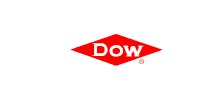“Here is the test: What you want to happen on a day like today is for your portfolio to drop less than the market. If you are a value investor this is a true test of it. Since we are buying “cheap” stocks, if they truly are, there will not be as much pain during sell-offs. The opposite is true also. During rallies, we should see percentage growth in excess of the market because our shares are so cheap others will rush to pick them up. That is how we should beat the S&P. Drop less during sell-off and jump more during rallies”
Time to put my words to the test. I am going to use my largest holding, Sears Holdings (SHLD) for this exercise since, the health of it determines the health of my portfolio as a whole (In Eddie I Trust). We are going to look at two three month charts. The first will be the S&P 500:

You will notice the huge drop on Feb 27 as all the averages plummeted. The S&P was down 3.5% on that day and eventually closed 5.5% down a couple trading days later. It took until yesterday to erase all the loses from that drop and currently stands about 1% over the pre-drop highs. As I said before, in order to check the strength of our picks we want to see a drop of less than the averages and a rise greater than them. Having picks like this will ensure that when all is said and done, we have beaten the S&P, our benchmark for the year. Now, lets look at a chart of SHLD for the same time span and see what happened:

After getting hammered along with the rest of the stock universe on Feb. 27, SHLD, like the S&P has steadily recovered. A few days after the drop, SHLD had not been hit as hard hit as hard as the S&P as it was down only 5%. The major difference is that while the S&P has realized an almost 1% gain, SHLD is sitting on an over 2% gain from its pre-drop high levels. It is important to note that the previous high prices were also 52 week highs for both the S&P and SHLD.
So, in less than 6 weeks SHLD took the hit the markets sell-off gave it and has recovered not only all of the losses from that drop, but added over 2% to the all time high set the week before the drop. Those of us who were patient and believed in our pick (and picked it for the right reasons) have been rewarded. Those who panicked (there were millions of shares dumped so a whole lotta folks did) and sold off their shares at the end of February or March are undoubtedly kicking themselves as they calculate the lost profits. They may have sold at a profit in February (if they had bought a while ago) but after the commissions they paid to sell, the taxes they will pay on the profits, and the missed appreciation of the shares since then, they are far behind us in total gains.
Sear Holdings proves, patience pays…







